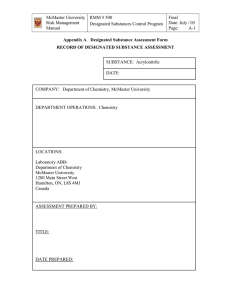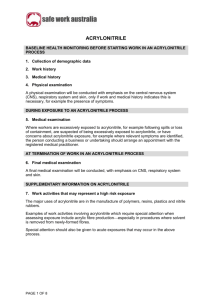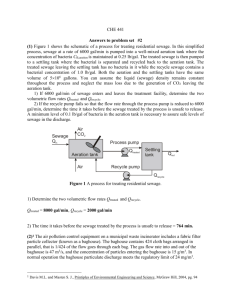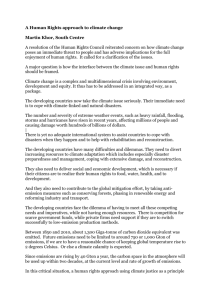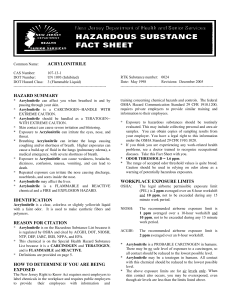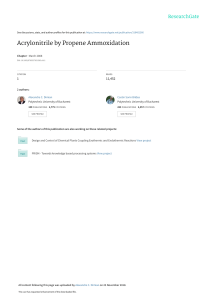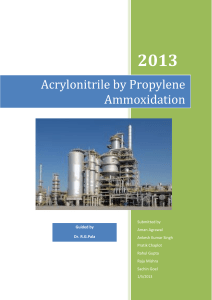Rules Proposed to be Removed from SIP 62
advertisement
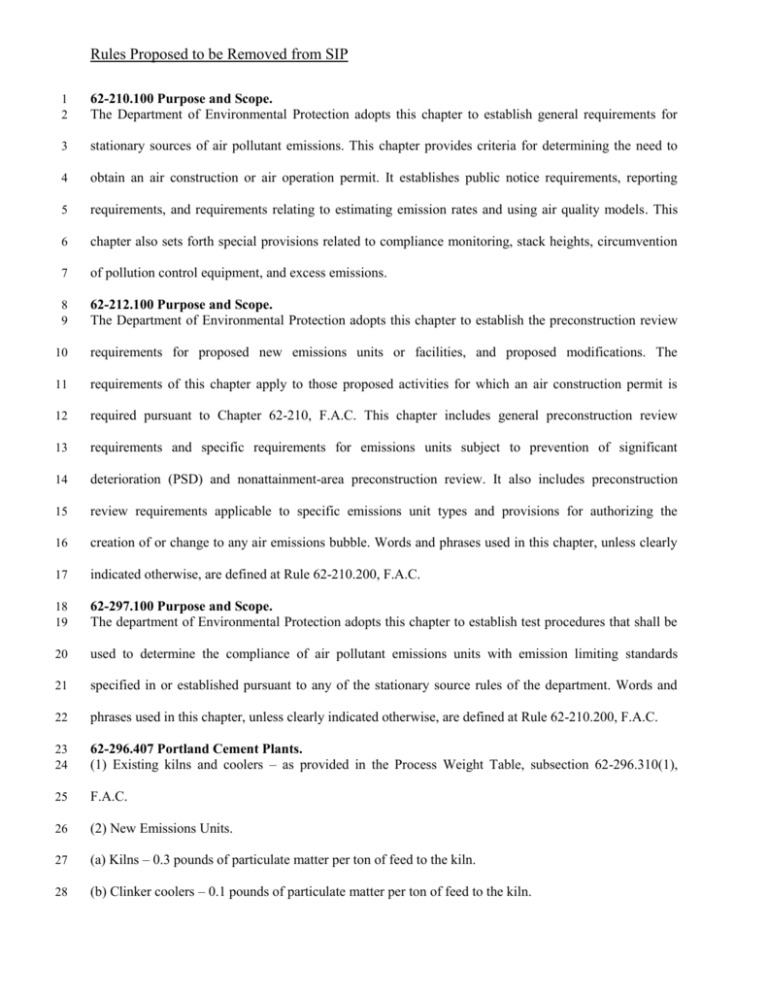
Rules Proposed to be Removed from SIP 1 2 62-210.100 Purpose and Scope. The Department of Environmental Protection adopts this chapter to establish general requirements for 3 stationary sources of air pollutant emissions. This chapter provides criteria for determining the need to 4 obtain an air construction or air operation permit. It establishes public notice requirements, reporting 5 requirements, and requirements relating to estimating emission rates and using air quality models. This 6 chapter also sets forth special provisions related to compliance monitoring, stack heights, circumvention 7 of pollution control equipment, and excess emissions. 8 9 62-212.100 Purpose and Scope. The Department of Environmental Protection adopts this chapter to establish the preconstruction review 10 requirements for proposed new emissions units or facilities, and proposed modifications. The 11 requirements of this chapter apply to those proposed activities for which an air construction permit is 12 required pursuant to Chapter 62-210, F.A.C. This chapter includes general preconstruction review 13 requirements and specific requirements for emissions units subject to prevention of significant 14 deterioration (PSD) and nonattainment-area preconstruction review. It also includes preconstruction 15 review requirements applicable to specific emissions unit types and provisions for authorizing the 16 creation of or change to any air emissions bubble. Words and phrases used in this chapter, unless clearly 17 indicated otherwise, are defined at Rule 62-210.200, F.A.C. 18 19 62-297.100 Purpose and Scope. The department of Environmental Protection adopts this chapter to establish test procedures that shall be 20 used to determine the compliance of air pollutant emissions units with emission limiting standards 21 specified in or established pursuant to any of the stationary source rules of the department. Words and 22 phrases used in this chapter, unless clearly indicated otherwise, are defined at Rule 62-210.200, F.A.C. 23 24 62-296.407 Portland Cement Plants. (1) Existing kilns and coolers – as provided in the Process Weight Table, subsection 62-296.310(1), 25 F.A.C. 26 (2) New Emissions Units. 27 (a) Kilns – 0.3 pounds of particulate matter per ton of feed to the kiln. 28 (b) Clinker coolers – 0.1 pounds of particulate matter per ton of feed to the kiln. 1 (3) Test Methods and Procedures. All emissions tests performed pursuant to the requirements of this rule 2 shall comply with the following requirements. 3 (a) The test method for particulate emissions shall be EPA Method 5, incorporated and adopted by 4 reference in Chapter 62-297, F.A.C. 5 (b) Test procedures shall meet all applicable requirements of Chapter 62-297, F.A.C. 6 62-296.413 Synthetic Organic Fiber Production. 7 (1) General Applicability. This rule applies to acrylonitrile emitting facilities. An acrylonitrile emitting 8 facility is a facility which produces or utilizes acrylonitrile as part of the facility's process operations, 9 except that any new or existing acrylonitrile emitting facility which has maximum uncontrolled emissions 10 of acrylonitrile of less than 600 pounds per year is exempt from the requirements of this rule. 11 (2) Emissions Unit Specific Performance Standards. 12 (a) Storage Tanks. No owner or operator of an acrylonitrile emitting facility subject to this rule shall 13 transfer, or cause or allow the transfer of, acrylonitrile from any delivery vessel into any stationary 14 storage tank unless there is in place a vapor-tight return line from the storage tank to the delivery vessel 15 and a system that will ensure the vapor line is connected before acrylonitrile can be transferred into the 16 tank. 17 (b) Delivery Vessels. The vapor-laden delivery vessel shall be maintained to be vapor-tight at all times 18 while at the acrylonitrile emitting facility except for periods of normal pressure vacuum venting, for 19 maintenance inspection, or for gauging. 20 (c) Process Equipment. The emission release, or escape, of acrylonitrile to the atmosphere from any 21 equipment used in acrylonitrile formation or utilization shall be limited by the application of Reasonably 22 Available Control Technology (RACT). The phrase “equipment used in acrylonitrile formation or 23 utilization” shall include transfer lines, reactor vessels, stripping columns, monomer recovery systems, 24 vacuum pumps, feed tanks, weigh tanks, blend tanks, pipes, valves and flanges. 25 (d) Wastewater Treatment. All wastewater which comes in direct contact with acrylonitrile and other 26 wastes containing acrylonitrile shall not cause a deviation from the pH range specified in the facility's air 1 construction or air operation permit that provides for the optimum degradation of acrylonitrile in the 2 receiving wastewater treatment system. 3 (e) Equipment Leaks. Acrylonitrile emissions due to leaks from equipment used in acrylonitrile formation 4 or utilization shall be minimized by implementing a formal leak detection and elimination program. Such 5 program must include the routine use of a reliable and accurate portable hydrocarbon detector to find 6 small leaks (a portable hydrocarbon detector means a device which measures hydrocarbons with a lower 7 limit of detection of at least 2 ppm and is of such design and size that it can be used to measure 8 acrylonitrile emissions from localized emission points associated with the equipment used in acrylonitrile 9 formation or utilization); provide for an acceptable calibration and maintenance schedule for the portable 10 hydrocarbon detector; and include at least a weekly survey of all representative facility locations or areas 11 containing equipment used in the formation or utilization of acrylonitrile which may leak acrylonitrile.
